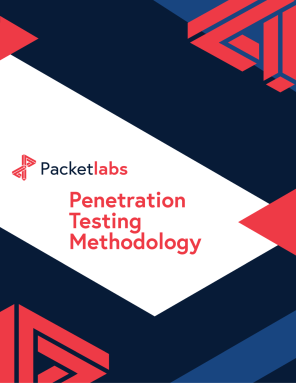How Malicious Hackers Earn Income
Would you like to learn more?
Download our Pentest Sourcing Guide to learn everything you need to know to successfully plan, scope, and execute your penetration testing projects.
When it comes to hackers, there are two groups: ethical hackers and malicious hackers. Ethical hackers are white-hat hackers who use their powers for good, while malicious hackers are black-hat hackers that use their skills for personal gain.
Ethical hackers are generally employed by specialized cybersecurity organizations or by individual companies to test their systems' security. These hackers use their knowledge to find vulnerabilities and then report them to the organization so that they can be fixed.
On the other hand, malicious hackers are individuals who break into systems for personal gain. This can include anything from stealing sensitive data to extorting money from organizations. They make money in various ways, including stealing confidential information, selling exploits, and creating ransomware.
Disclaimer: This article is not intended to promote malicious hacking in any way: it is to show our readers how hackers are making money and why it's critical to not give in to ransomware demands or pay for leaked data.
What is a Hacker's Source of Income?
Hackers make money in various ways, including stealing confidential information, selling exploits, and creating ransomware. Here are a few more ways in which malicious hackers are funded.
Selling Data
Data is valuable. This value motivates hackers to breach corporate backend systems and databases to acquire this data. Hackers utilize various approaches to obtain information to sell on the dark web, including social engineering, spyware, and dumpster diving. Data can include medical records, login credentials, and personally identifiable information (PII).
Credit cards, as just one example, are one of the internet's most widely used payment methods, making them one of the most sought-after data troves for hackers. Hackers target e-commerce sites and OTT platforms' databases to steal credit card details stored on their databases. Some hackers employ MitM and malware-based attacks to intercept the transaction data. They sell this data on the surface web or dark web. The buyers use the credit card details to perform carding scams or buy illicit goods from the dark web.
Extorting Health Information
Healthcare businesses are also targets for cyberattacks since they house a wealth of personal health information that fitness-tracking gadget makers are eager to acquire. By leaking health information on the dark web, hackers make a killing; it has one of the highest efforts to income conversion rates.
According to an IBM report, the average cost of a data breach in the healthcare domain touched US$ 9.23 million in 2021, a 17-year-high, and has continued to lead breach costs throughout 2025. Due to this, healthcare organizations have started following strict compliance norms like Health Insurance Portability and Accountability Act (HIPAA) and adopting the principle of Least Privilege Access.
Leveraging Ransoms
Another prominent way hackers generate income is by infecting corporate systems with malware, which encrypts all the system's files, network-connected systems, sensitive information, and cloud files. The hackers demand ransom to give the decryption key to the affected organization.
According to Palo Alto Networks, a sharp spike of 518% was recorded in the average payout to ransomware gangs since 2021. Some cybercriminals offer Ransomware-as-a-Service (RaaS) by selling malicious software to the highest bidders to carry out attacks. Cyber extortion is one of the most lucrative ways of generating money.
Enabling Botnets
Botnets (networks of compromised computers) are often used for spam campaigns, crypto-mining, or launching Distributed Denial of Service (DDoS) attacks. Cybercriminals rent out botnet access to other hackers, generating steady income streams.
The Spamhaus Threat Update (2025) reports that botnet command-and-control (C&C) activity increased by 27% year over year, highlighting the ongoing use of infected IoT devices and unsecured systems in large-scale attacks. These networks can be hired on dark web forums for as little as $30 an hour, depending on the botnet’s size and location diversity.
The Global Cybercrime Economy
As of 2025, the cybercrime ecosystem has evolved into a shadow economy rivaling major global industries. Cyberattacks now cost businesses and governments more than $10 trillion USD annually, with supply chain compromises and ransomware leading the charge.
Dark web marketplaces operate much like legitimate e-commerce platforms, complete with escrow systems, customer reviews, and technical support for buyers. This industrialization of cybercrime means even small-scale actors can participate in large-scale operations through services like RaaS and phishing-as-a-service (PhaaS).
The global nature of these crimes complicates law enforcement efforts, making cyber resilience, proactive testing, and regular security audits critical for every organization.
Why Paying Hackers is Never the Answer
When faced with ransomware or extortion, many organizations feel pressured to pay... but doing so incentivizes future attacks and may even violate North American or international sanctions laws if the payment benefits a listed criminal entity.
Instead, organizations should focus on prevention and preparation. A strong cybersecurity posture includes:
Regular penetration testing and red team assessments
Employee security awareness training
Incident response planning and regular tabletop exercises
Recovering from an attack without paying ransom demonstrates resilience and reinforces that cybersecurity investment is far more cost-effective than breach recovery.
Conclusion
With the rise in cyberattacks and ransomware attacks, it is important to remember why paying malicious hackers is never a good idea. Not only does it encourage them to continue their illegal activities, but it also puts your organization at an even greater risk of being targeted in the future.
The best way to protect your organization is to invest in robust security measures and have a comprehensive incident response plan so you can quickly contain any damage and get back up and running as soon as possible.
Cybercrime is a serious threat to businesses and individuals alike and is only getting more sophisticated. By understanding the various ways hackers generate income, we can be better prepared to defend against these attacks.
Contact Us
Speak with an Account Executive
Interested in Pentesting?

Penetration Testing Methodology
Our Penetration Security Testing methodology is derived from the SANS Pentest Methodology, the MITRE ATT&CK framework, and the NIST SP800-115 to uncover security gaps.
Download Methodology
Pentest Sourcing Guide
Download our Pentest Sourcing Guide to learn everything you need to know to successfully plan, scope, and execute your penetration testing projects.
Download GuideFeatured Posts

November 26 - Blog
ChatGPT and Other AI Platforms May Be Used To Craft Malicious Code
While many AI tools create opportunities for innovation, others are using them to create malicious code. Here's what you need to know about the rise of AI code by ChatGPT and other AI chatbots.

November 14 - Blog
The Rise of Hackers in APAC and Its Implications for Australia
While APAC is steadily emerging as a global innovation hub, the region's massive digitization post-pandemic has outpaced its cybersecurity preparedness and has led to a spike in breaches.

November 06 - Blog
9 AI Enabled Cybersecurity Tools in 2025
Discover 5 AI-powered cybersecurity tools that support red teaming, threat detection, and vulnerability discovery efforts.







